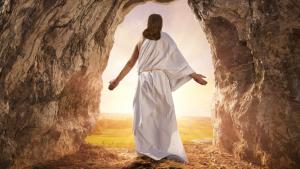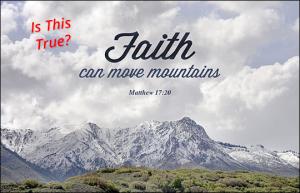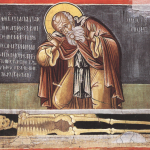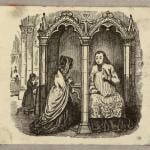
Christianity finds ultimate meaning in a snippet of history with Jesus of Nazareth at its center. Knowing Jesus in his historical existence is important to Christians because that’s our key to knowing God. The “quest of the historical Jesus,” as Albert Schweitzer named it, got off to a shaky start, however. Schweitzer concluded that all the “biographies” of Jesus up to his time told more about their authors than about the real Jesus. Their “Jesus” looked like an enlightened 19th century figure rather than a first century Jew. Schweitzer’s book, The Quest of the Historical Jesus, dates to 1905. (Online version by The Project Gutenberg)
Third in a series of posts that I call “Stories of Jesus and the Character of God.” In this series I probe what historical Jesus scholars can say about the humanness and the earthly career of Jesus—beyond which historical research cannot go. The ultimate objective is to let this Jesus reveal the character of God. Contents and links to other entries in the series here.
Historical Jesus research took a while to recover from that blow. Pessimism about history lasted through the first half of the 20th century. Some Christians said we could know next to nothing about Jesus beyond the fact that he existed. There were those on the fringes who called Jesus’ very existence a Christian myth. You can find them pontificating (if that’s the right word) on the internet still.
Eventually, in the course of the last century a second and even a third quest of the historical Jesus developed. Among other things, these added techniques for overcoming the subjectivity of earlier approaches and paid attention to the Jewishness of Jesus. Common to all these quests is that the information contained in Christian and Jewish scriptures is evidence which needs to be evaluated. And there are other sources of evidence—non-canonical Christian writings, Jewish writings from around the time of Jesus, a very few references to Jesus by Roman authors, archaeological digs, even research into the religiosity of humans in general and the ways religious meaning gets expressed in ritual and literature. It’s like a detective story and a fascinating search.
A story for the world and the Church’s story
The quest of the historical Jesus has investigators who aren’t only Christians. “Give him back to us.” Marxist philosopher Roger Garaudy cries. Jesus belongs to the world, and this atheist wants him rescued from the Christians’ pious and doctrinal lenses.
Those lenses, along with imperfect memories and lively imaginations, were operating even as the Bible took shape. The Catechism of the Catholic Church recognizes that human beings wrote the Bible with their human strengths and limitations. Add to that the fact that Jesus and the Gospel writers lived a long time ago. Their culture and literary ways were very different from ours. It’s not at all surprising that the quest of the historical Jesus follows a rather difficult trail.
Here’s another problem for the Christian. It’s possible to uncover all the available data and put one’s faith in the wrong thing. For a time I thought all I had to do was uncover the real history and I’d have the truth that God intends me to know. I thought getting the history right substituted for having been there, and, of course, if I had been there I would have believed.
Not necessarily. Many people met Jesus, heard him, saw what he did, and didn’t believe in him. Even though we can say, with Pope Francis, God reveals himself as history, something more than historical information is needed.
The Church has always had that something more—a certain way of imagining the world, themselves, and God. If that’s a “doctrinal and pious lens,” it’s one that the Church inherited; she didn’t make it up. And it reveals things the historian can’t about Jesus. The Church has always known something of the real Jesus even while being confused about some historical details.
“The historical Jesus is not well-known in the churches.”
Straightening out the confusion on the historical details may seem like abandoning the Jesus that the Church always knew. That may explain the reality behind the above quote, which I ran into somewhere.
Catholic scholars are among the leaders in any quest of the historical Jesus, but their conclusions don’t filter down very far. Educators and Church leaders shy away from the critical results of their own scholars’ research. Seldom does a pastor let us in on the “secret” that the faith of the early Church colored the stories of Jesus in the Bible. Or that the Flood and Ark story is a story, not history. (See this post.)
Even though I think this is unfortunate, I can see why it is the case. Some of the results of the scholarly quest of the historical Jesus change the way we imagine Jesus. I think the changes can have a positive effect on the understanding of doctrine and the practice of piety. But change is scary. It’s hard to know what will happen to the whole picture as some of the details change. But accurate history is at least a goal, often a possibility, and sometimes, more or less, a reality. Images of Jesus that are not true to history won’t continue to inspire.
The quest of the historical Jesus, a plus for faith
Is an unreal Jesus already leading many to imagine an unreal God and maybe give up on God entirely? I don’t know, but people are leaving the Church. In my experience these are people who want to see and be involved in reality as it is. They love this universe, this fragile Earth and its peoples. They worry about the perils facing our natural and human communities.
A common atheist’s criticism of Christianity is that it is pious nonsense based on myth, not reality. Jesus is not a myth, but a Christian way of imagining the world based on an unreal picture of Jesus is less and less convincing. I believe a more truly historical picture of Jesus can foster a way of imagining reality that can inspire and challenge modern people. In my case acquaintance with the quest of the historical Jesus has strengthened my faith, has in fact made it possible for me to keep on believing in God.
A story of Jesus that is historically credible turns out to be a challenge to the one who has always believed. I think it can be the same for one who has ceased believing or never believed but could say with Roger Garaudy, “Give Jesus back to us.” Truly encountering anyone is a challenging experience, but meeting Jesus is dangerous. One might have to heed Jesus’ favorite saying: “Repent, ‘rethink, change your mind, change your view of the world. The Kingdom of God is at hand.”
I met Jesus first in his traditional guise with divine power radiating through him. Then I got to know also the clearly human historical Jesus. It’s been a challenge, but one that I can recommend—to explore new possibilities for understanding and, perhaps, believing in God.
Image credit: All That’s Interesting, via Google Images












